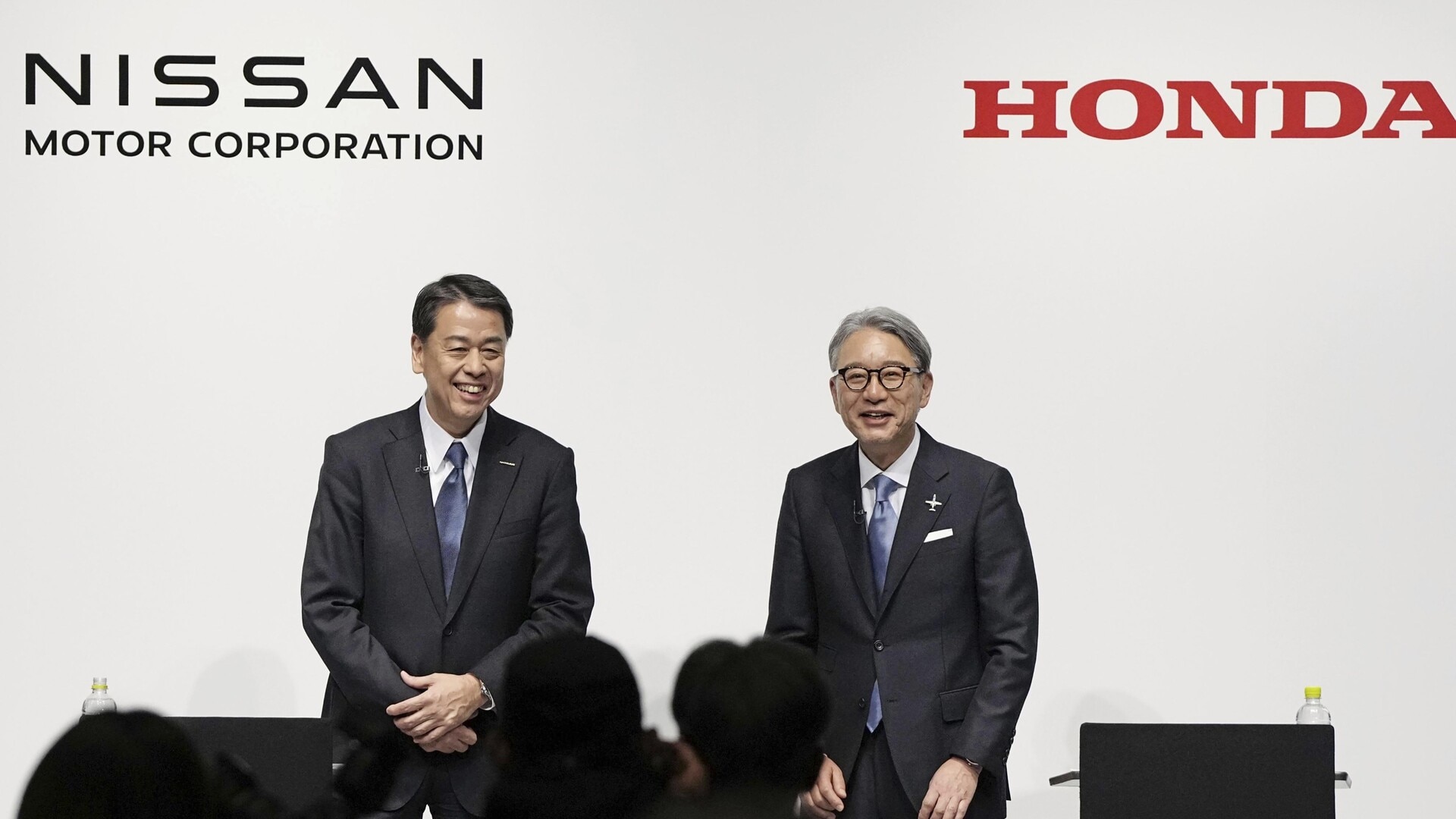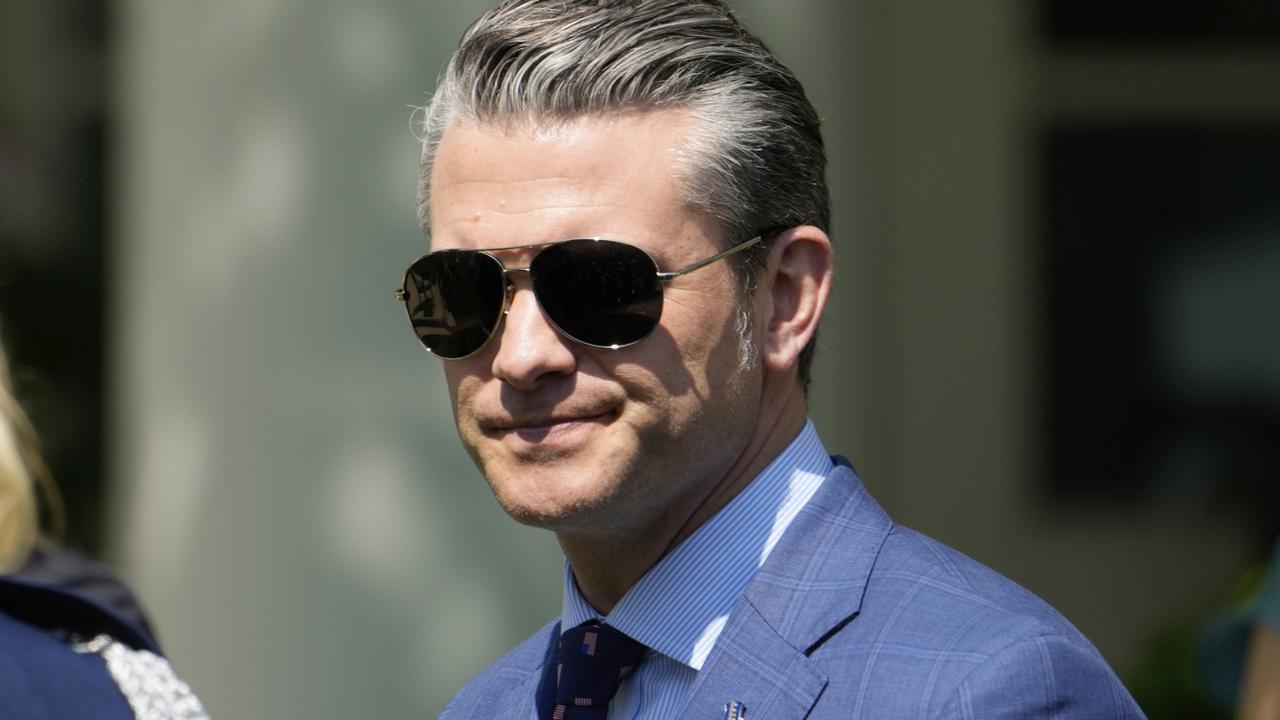Honda, Nissan plan to create world’s No. 3 automaker in 2026 merger
Honda’s chief executive said the move wasn’t a rescue of troubled Nissan as Japanese government pressure and China impacts drive marriage.

Honda and Nissan said they planned to merge in 2026, a move Honda’s chief executive said wasn’t a rescue of troubled Nissan, but a recognition that developing new technologies was too hard to do alone.
The companies said they intended to create an automaker that, combined with Nissan partner Mitsubishi Motors, would be the third-largest carmaker in the world with more than eight million vehicles sold annually.
The announcement came at the end of a year in which Nissan’s profit has tumbled in part because of a dated model line-up in the US.
Both companies have cratered in China, where electric vehicles and plug-in hybrids are growing quickly.
Last year, China surpassed Japan as the world’s leading auto exporter by number of vehicles.
With the car industry moving toward autonomous vehicles driven by artificial intelligence, the companies said they needed to combine research and cut costs to survive.
Still, the merger will be a challenge to complete successfully.
Power balance tilted
Honda and Nissan share similar model line-ups and a focus on the US market, so they face a choice of either eliminating one brand’s models or leaving duplicated product and marketing teams in place.
The power balance is tilted in Honda’s favour because it has a higher stockmarket value.
The companies said Honda would nominate a majority of the directors of the combined company and its top executive would come from Honda.
Detailing plans they first disclosed last week, the carmakers said they aimed to reach a definitive agreement next June and create a listed holding company in August 2026 that would wholly own Nissan and Honda as subsidiaries.
Honda’s chief executive Toshihiro Mibe repeatedly batted back suggestions that his company was being railroaded into a deal by Japanese officials concerned about the survival of Nissan.
“This is not a rescue,” Mibe said at a news conference in Tokyo.
Citing the high cost of developing intelligent cars and electric vehicles, he said, “It would be rough to do that by ourselves.”
Mibe struggled when asked what attracted him to Nissan as a partner, stressing that Honda would remain an independent brand in the merged company. He concluded, “I don’t know if that was an answer.” Nissan shares have rallied more than 30 per cent since last week’s announcement as investors have welcomed the emergence of a stronger peer to help it through its restructuring.

What to expect
Honda, which expects a net profit of about $US6bn this fiscal year, has been doing better and on Monday said it intended to buy back up to $US7bn of its own shares next year, or up to 23.7 per cent of its shares outstanding.
The companies described the merger as a way to boost efficiencies, saying they would share production lines, buy the same parts in bulk and combine R&D projects.
They said the merger wasn’t about making big job cuts in the US or closing factories but didn’t rule out such steps.

Japan’s government has left no doubt about its support for a merger.
“We should take a favourable view when companies co-operate to strengthen their competitiveness,” said Yoji Muto, head of the ministry of economy, trade and industry, on Friday.
Muto, while declining to discuss the merger plan specifically, said such industry realignments are “one effective method for fostering innovation and raising corporate value.”
Honda’s Mibe and Nissan’s chief executive visited government ministries together on Monday morning ahead of their announcement, in a symbolic show of deference to their regulators.
Ghosn from the past
Carlos Ghosn, the former Nissan chairman who was arrested in Japan in 2018, said Monday that the merger “makes sense politically” because the industry ministry wanted a rescuer of Nissan to be Japanese.
“Do they force somebody? No, they won’t force, but they can give you arguments that you cannot refuse,” said Ghosn at an online news conference.
He spoke to Tokyo-based reporters from Lebanon, where he escaped to five years ago after being charged with financial crimes that he denied.

Ghosn, who no longer has any ties to Nissan, said the merger plans “do not make sense” and won’t work because “there is duplication everywhere.”
Under Ghosn in 2016, Nissan became the top shareholder in Mitsubishi, and it currently holds a 26.7 per cent stake. Mitsubishi said it wanted to co-operate with the merged Honda-Nissan company, assuming the deal goes through, and would decide by January what form the co-operation would take.
China has been encroaching on areas that Japan once dominated – both cars and components such as batteries – worrying Japanese officials.
About 8 per cent of Japan’s working population is involved in automotive and related jobs, according to the Japan Automobile Manufacturers Association.
Last year, the industry overall – including cars, trucks, motorbikes and components – accounted for more than a fifth of Japan’s total exports, the association said.
With Yoko Kubota
– The Wall Street Journal



To join the conversation, please log in. Don't have an account? Register
Join the conversation, you are commenting as Logout